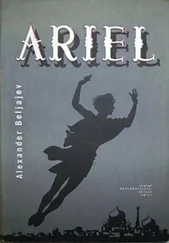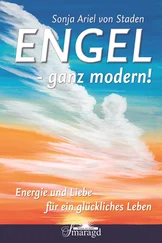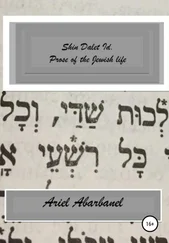Ariel Toaff - Blood Passover
Здесь есть возможность читать онлайн «Ariel Toaff - Blood Passover» весь текст электронной книги совершенно бесплатно (целиком полную версию без сокращений). В некоторых случаях можно слушать аудио, скачать через торрент в формате fb2 и присутствует краткое содержание. Жанр: Религиоведение, на английском языке. Описание произведения, (предисловие) а так же отзывы посетителей доступны на портале библиотеки ЛибКат.
- Название:Blood Passover
- Автор:
- Жанр:
- Год:неизвестен
- ISBN:нет данных
- Рейтинг книги:3 / 5. Голосов: 1
-
Избранное:Добавить в избранное
- Отзывы:
-
Ваша оценка:
- 60
- 1
- 2
- 3
- 4
- 5
Blood Passover: краткое содержание, описание и аннотация
Предлагаем к чтению аннотацию, описание, краткое содержание или предисловие (зависит от того, что написал сам автор книги «Blood Passover»). Если вы не нашли необходимую информацию о книге — напишите в комментариях, мы постараемся отыскать её.
Blood Passover — читать онлайн бесплатно полную книгу (весь текст) целиком
Ниже представлен текст книги, разбитый по страницам. Система сохранения места последней прочитанной страницы, позволяет с удобством читать онлайн бесплатно книгу «Blood Passover», без необходимости каждый раз заново искать на чём Вы остановились. Поставьте закладку, и сможете в любой момент перейти на страницу, на которой закончили чтение.
Интервал:
Закладка:
541
"Pater ipsius [...] de dicto sanguine ponebat in pasta, de qua pasta faciebat fugatias, et hoc ante festum Pasce eorum; quas fugatias ipsi Iudei postea comedebant in dicta die Pasce" [“The father [...] placed some of the blood in the dough, from which they make the unleavened bread, and does so before the Passover feast; which these Jews ate on Passover day”] (cfr. ibidem, p. 125).
542
Cfr. G. Divina, Storia del beato Simone da Trento , Trent, 1902, voI. II, pp. 1-32.
543
Wien, Österr. Nationalbibl., Ms. 5360, cc. 186r-189v. Information and translation by D. Quaglioni.
544
"(Iudei) de dicto sanguine accipiunt aliquam particulam et ponunt in pasta, de qua pasta postea faciunt fugatias azimas, et de quibus fugatiis açimis postea comedunt inter se in die solemni, videlicet in die Pasce" [“(The Jews) take a few particles of the blood and place it in the dough, from which they make their unleavened bread, and later they eat it amongst themselves on the solemn day, namely, on Passover”] (cfr. Esposito and Quaglioni, Processi , cit., voI. I, p. 287).
545
"(Iudei) ponunt illum sanguinem in eorum azimis et illum postea comedunt [...] in contemptum Iesu Cristi, quem Cristiani dicunt esse Deum suum; et quod ideo ponunt in eorum azimas sanguinem, quia posteaquam positus est sanguis in pasta, illam pastam pinsant et graminant, et deinde faciunt fugatias, quas fugatias postea punetant dicendo ista verba: Chen icheressù chol hoyveha . Que verba sonant in lingua Latina: "Così sya consumadi li nostri inimizi". Et postea dictas fugatias commedunt, que commestio fagatiarum cum sanguine significat quod ita corpus et virtus Iesu Cristi Dei Cristianorum ita penitus morte consumptum est et consumpta, sicut iste sanguis qui est in fugatiis ex commestione penitus consumitur" [Approximately: “(The Jews) place the blood in their unleavened bread and afterwards they eat it […] in contempt of Jesus Christ, whom the Christians say is their God, and that the reason they put the blood in their unleavened bread, is because after the blood is placed in the dough, they knead the dough and shape it, and make their unleavened bread out of it, and they eat it, saying these words: Chen icheressù chol hoyveha, which means in Latin: ‘Thus may all our enemies be consumed’. And then they eat the unleavened bread, and in eating it with the blood in it, it means that the body and virtue of Jesus Christ the God of the Christians was thus punished by death and consumed, thus, the blood in the unleavened bread is thus consumed is consumed at a common meal”] (cfr. ibidem, p. 293). For the Hebrew words which appear in the text, see [Benedetto Bonelli], Dissertazione apologetica sul martirio del beato Simone da Trento nell'anno MCCCCLXXV dagli ebrei ucciso , Trent, Gianbattista Parone, 1747, p. 145.
546
Machazor le-Rosh Ha-Shanah ("Liturgical Form for the Jewish New Year"), Yehì razon shel Rosh Ha-Shanah ("New Year’s Wishes"), s.v. cartì ("porro"). On the so-called "Haggadah del Capodanno ebraico" and its content, see A. Toaff, Mangiare alla giudia. La cucina ebraica in Italia dal Rinascimento all'età moderna , Bologna, 2000, pp. 134-135.
547
The depositions from Mosè da Ansbach, "a young person nineteen years old", on this matter are reported in detail in Divina, Storia del beato Simone da Trento , cit., vol. lI, pp. 20-21.
548
"In die Pasce ipsorum Iudeorum, ante cenam, unusquisque Iudeus paterfamilias accipit modicum de sanguine pueri Cristiani et illum ponit in uno ciato pieno vino, quem ciatum postea ponit super mensa, circa quem mensam omnes de dicta familia circumstant; et paterfamilias ponit digitum in ciato suo, in quo est commixtus sanguis pueri Cristiani, et deinde curo eodem digito balneato in vino aspergit totam mensam et ea omnia que super mensa sunt, dicendo certa verba Hebraica, per que in effectu commemorantur decem maledictiones quas Deus dedit Pharaoni et Egiptiis, quia nolebant dimittere populum Iudaicum; dicens quod posteaquam dictus paterfamilias dixit suprascripta verba, idem paterfamilias iungit hec alia verba: "lta imprecamur Deum quod similiter immittat predictas .X. maledictiones contra gentes, que sunt inimice fidei Iudeorum", intelligendo maxime contra Cristianos" [“On the Jewish Passover, before dinner, each Jewish head of a family takes a small quantity of the blood of a Christian child and places it in a glassful of wine, and they put the glassful of wine on the table, around which all members of the family are sitting; and the head of the family places his finger in his glass, containing the wine mixed with the blood of a Christian child, and then, after bathing his finger in it, he sprinkles the entire table around which the people are sitting, saying certain words in Hebre, by means of which they commemorate the ten curses which God inflicted on the Egyptians, who didn’t wish to release the Jewish people, after which each Jewish head of a family says the above words, after which he adds these words: 'Thus we pray God that he may inflict ten similar curses against the peoples who are enemies of the Jewish people’, meaning, most of all, the Christians”] (cfr. Esposito and Quaglioni, Processi , cit., vol. I, p. 356).
549
"Pater ipsius [...] in die Pasce Iudeorum, ante cenam et etiam in die sequenti post Pascha ante cenam, accipiebat de dicto sanguine et de illo ponebat in ciato suo, in quo erat vinum, et deinde aspergebat mensam maledicendo fidem Cristianorum" [“Their father [...] on Passover, before dinner as well as before dinner the following day, takes some of the blood and puts it in his glass, containing wine, and sprinkles the table, cursing the Christian fait”] (cfr. ibidem, p. 125).
550
The brief text of the Haggadah is the following: "Con prodigi, questo è il sangue ( zeh ha-dam ), come è detto: "Farò prodigi in cielo e in terra" [“With miracles, this is the blood ( zeh ha-dam ), as it is said: ‘I will do miracles in the Heaven and Earth’”] (cfr. R. Bonfil, Haggadah di Pesach , Milan, 1962, pp. 62-63).
551
"Hoc fecerunt in memoriam unius ex .x. maledictiones quas dedit Deus Egyptiatiis quando retinebant populum Hebraicum in servitute et quod inter ceteras maledictiones Deus convertit omnem aquam terre Egypti in sanguinem"[“This they do in memory of the ten curses inflicted by God on the Egyptians when they held the Hebrews captive and that, among these multiple curses, God changed all the water of Egypt into blood”] (cfr. Esposito and Quaglioni, Processi, cit., voI. I, p. 287).
552
Israel Wolfgang's long and detailed report by is reproduced in Divina, Storia del beato Simone da Trento , cit., vol. II, pp. 16-19.
553
Israele di Lazzaro managed the principal lending bank at Piacenza from 1449 until at least 1472 and was the treasurer of the Jewish community of the Duchy of Milan in the years 1453-1454. In 1479, he was still alive and represented the heirs of Benedetto da Como in the negotiations for renewal of the money lending permit in the city of Como (cfr. Sh. Simonsohn, The Jews in the Duchy of Milan , Jerusalem, 1982, voI. I, pp. 126, 131-133 etc.).
554
On Lazzaro's deposition, cfr. Divina, Storia del beato Simone da Trento , cit., voI. II, pp. 23-25.
555
Cfr. ibidem, pp. 25-32, who presents an exhaustive exposition of the details of Mosè Bamberg's long deposition.
Читать дальшеИнтервал:
Закладка:
Похожие книги на «Blood Passover»
Представляем Вашему вниманию похожие книги на «Blood Passover» списком для выбора. Мы отобрали схожую по названию и смыслу литературу в надежде предоставить читателям больше вариантов отыскать новые, интересные, ещё непрочитанные произведения.
Обсуждение, отзывы о книге «Blood Passover» и просто собственные мнения читателей. Оставьте ваши комментарии, напишите, что Вы думаете о произведении, его смысле или главных героях. Укажите что конкретно понравилось, а что нет, и почему Вы так считаете.












